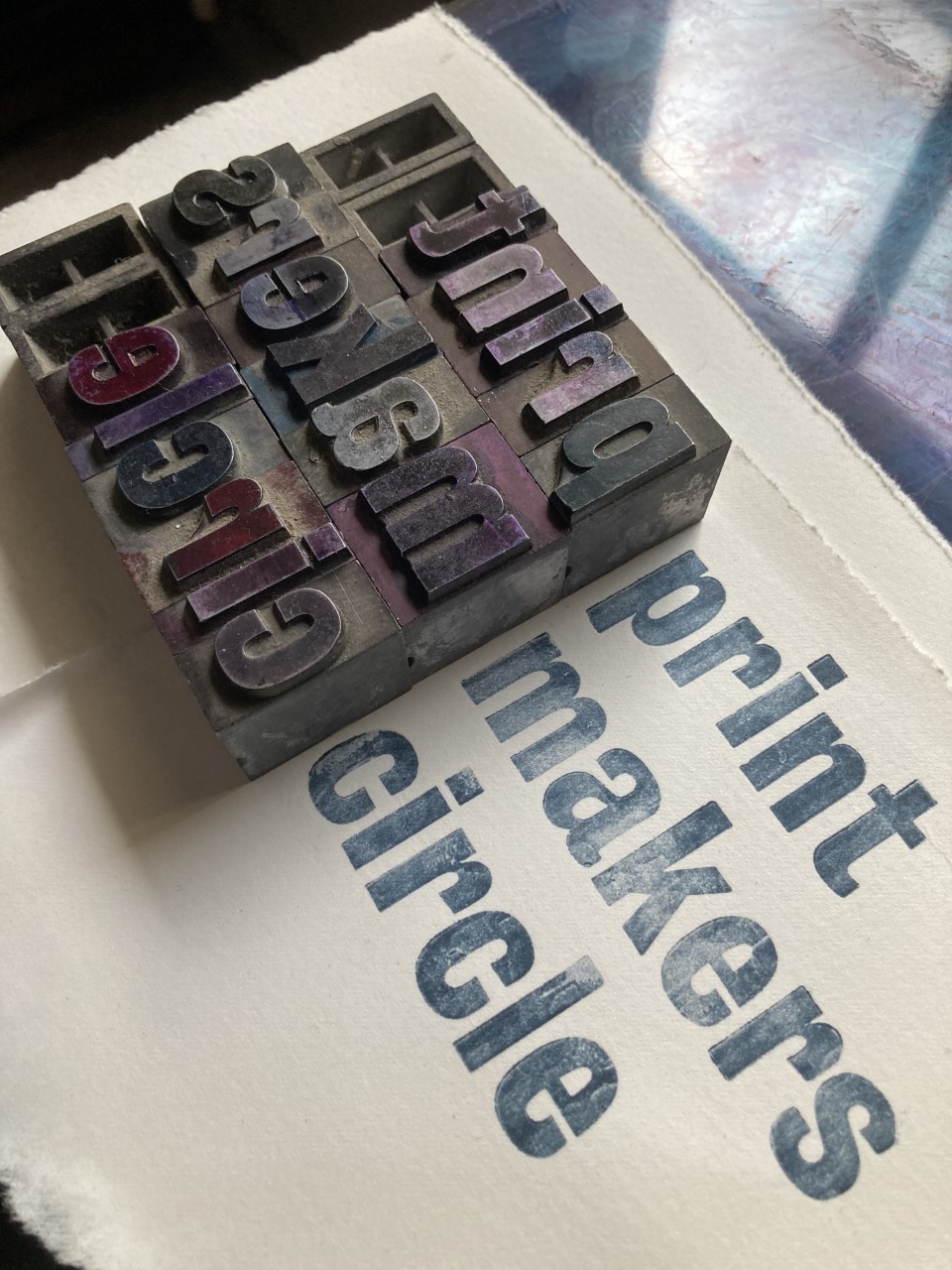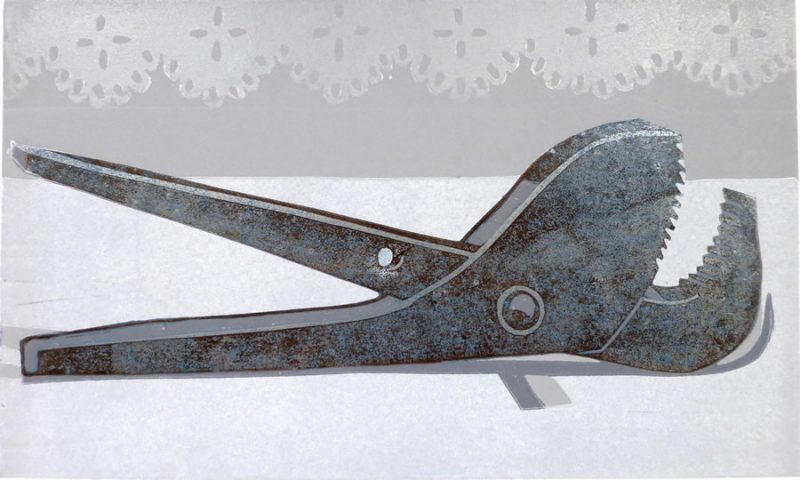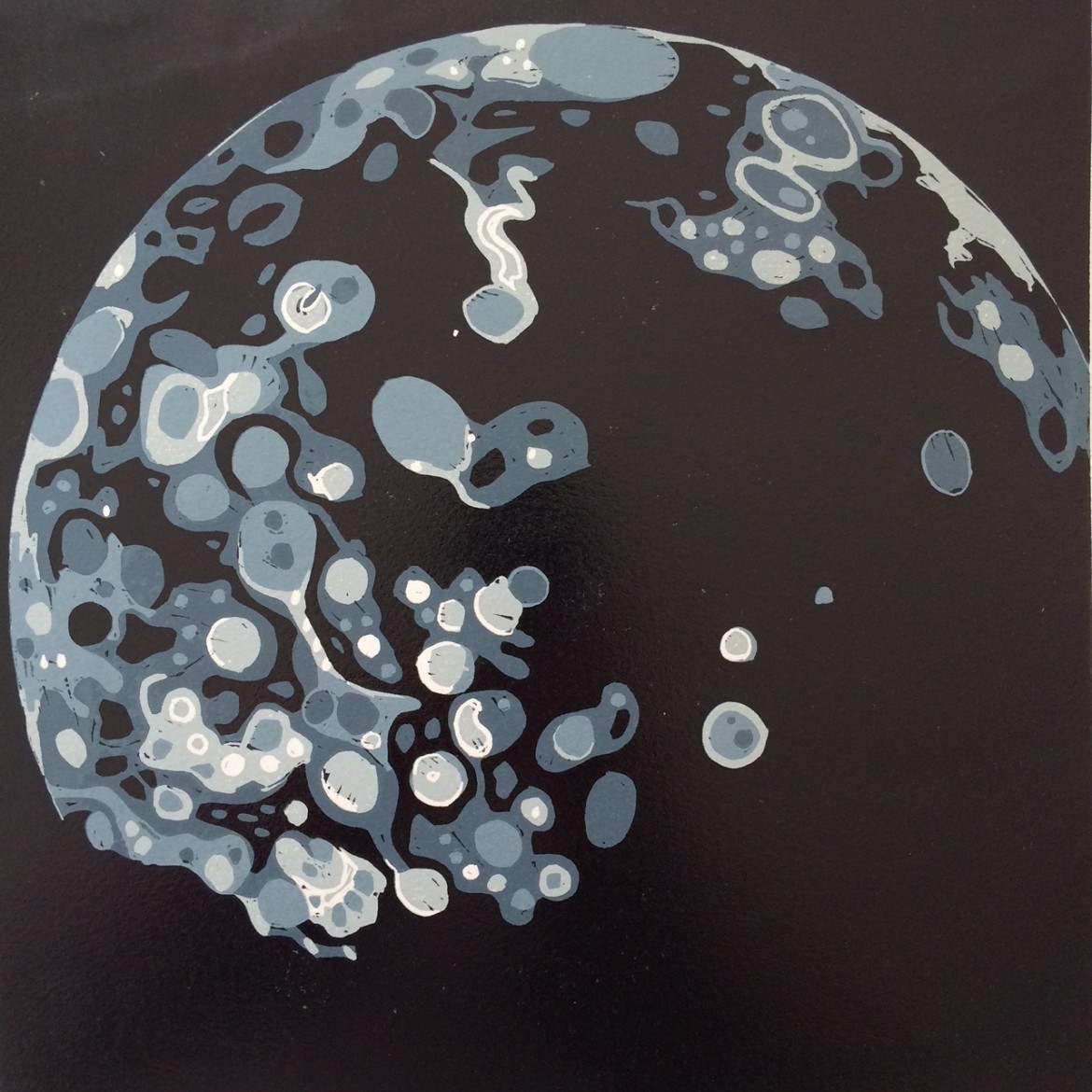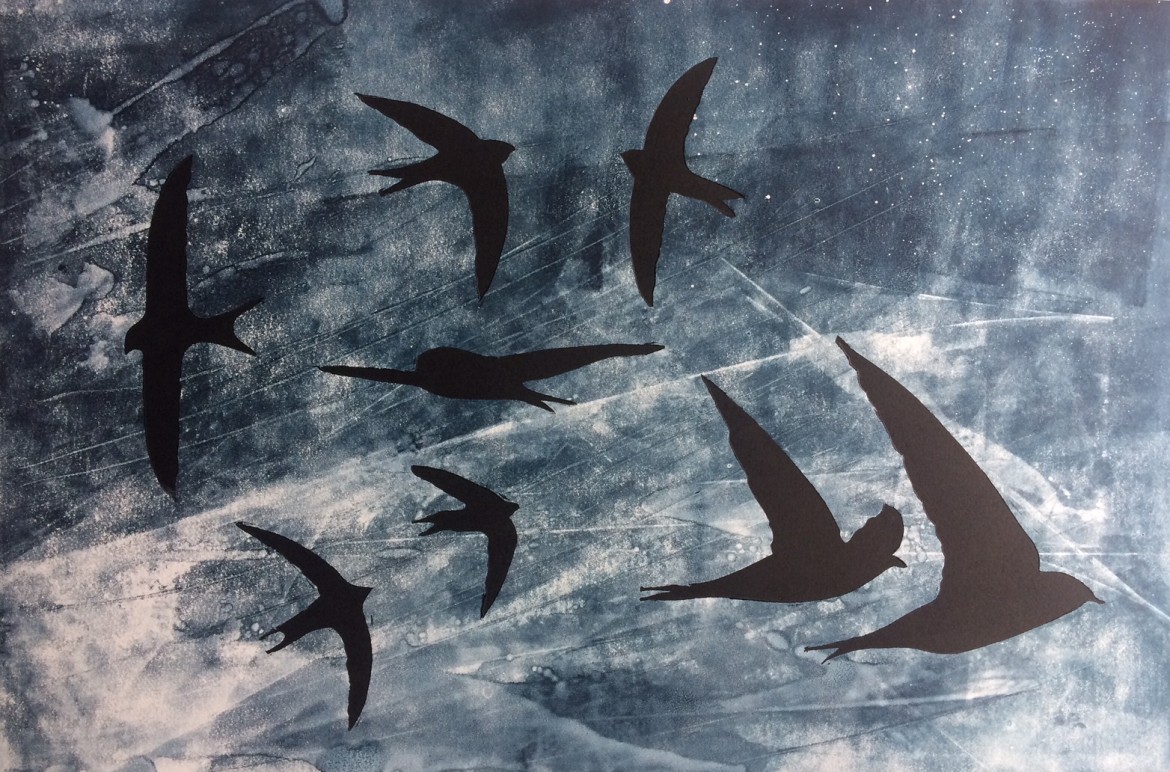People who work in the creative sector typically have a portfolio of jobs and no one thing defines them, that is the same for Helen and she is not unique in this respect and describes the plethora of activities she undertakes in her art practice.
In Helen’s case she makes and sells contemporary original prints, Often commissioned to create works for special projects such as North Yorkshire and North York Moors National Park’s Dark Skies Festivals as well as artist in residencies at various museums. With 25 years-experience of tutoring at art schools and colleges on her CV, she also teaches independent art classes.
The Hepworth Wakefield retains Helen as a creative practitioner to deliver exciting initiatives including the School Print Project that champions the arts and develops programmes that stimulate and educate. It’s intention is also to ensure that contemporary art is commonplace in the community and in primary and secondary education.
Helen established the Print Room, a pop-up printmaking space in a shop with exhibition, studio and workshop, showcasing the various techniques and offering the public a chance to learn and experience them hands on. She has also taken this concept to a variety of art venues and festivals over the years.

For Leeds City Art Gallery, Helen works an artist ambassador on the promotion of the ever-expanding Picture Library. As one of the gallery’s collected artists, She is perfectly placed to collaborate with its development.
Throughout Helen’s artistic life she has worked closely with several galleries and museums, she is intrigued about why and how we collect, what engages us, how museums/galleries engage with visitors, and what we want from our public facilities. Through her printmaking she always aims to create a vibrant, dynamic, fascinating space, where emotions and memories are triggered.

Smart Gallery
Smart Gallery (Social Museum and Art Gallery)! Smart Gallery is a concept Helen conceived where she works with existing venues and arts festivals to set up temporary exhibitions. The exhibits are crowd-sourced from the public who loan their own special objects that they consider worthy of being in a museum. They dictate the content, positioning, labelling, and curating. Helen then make artworks and contemporary linocuts inspired by the collection, and leads workshops and other activities including creative writing, type setting, cross stitch, knitting, printing, animation, lino-cutting, conservation, monoprint. The idea for Smart Gallery was inspired by an extensive residency at Craven Museum & Gallery and that cemented her fascination with the histories and emotional association that the exhibits have.
With Smart Gallery, the rules are made up as needed. Starting from scratch to create a temporary museum allows the participant to interact as they choose whether that is donating an object, joining a workshop, participating in adult show and tell – always a firm favourite, or just simply to visit. Engagement is encouraged with the exhibits, and this prompts discussions about the purpose of museums, curating and archiving. As the lead artist, Helen chooses the objects that inspire her to develop into linocuts. That inspiration might be a fascination with their story or a pleasing aesthetic that would transform into an 2D artwork. The legacy of each exhibition is a retrospective catalogue and website devoted to the wonderful possessions that people have shared. Smart Gallery is the opposite to the stuffy museums where artefacts are dictated by curators and sponsors and displayed behind glass to be viewed clinically in a sterile environment.

When she starts producing prints using other people’s personal possessions, a thing to consider is how to bring the past alive while avoiding nostalgia. Nostalgia is usually rose tinted, so it is essential to approach the subject honestly and without prejudice. To fully understand an object it helps to draw it, then you are forced to look properly and absorb all its detail, If you are lucky enough to be able to hold or touch it then senses are heightened, and tactile observations offer further clues to help inform your decisions.
Colombian and Albion Presses
Handling the collections in museums is so exciting and such a privilege. You could say that Helens own home is a museum because she has been a collector most of her life, mostly objects that appeal to her sense of fun and aesthetic and she has a house and studio full of treasures both rare and commonplace but always eclectic. One of her most treasured possessions is the magnificent 19th century cast iron Columbian hand-printing press in her studio. It is decorated with sculpted cornucopia and insignia and weighs 1.5 tons, yet the platern can be engaged with my little finger such is the skill of design and subsequent engineering. One of the things she loves most about it is the eagle counterbalance that flies when she print. It is so big Helen had to sacrifice the sitting room in her house as it was the only room with a concrete floor that could take the weight. It is rather fitting that she creates museum pieces on a museum piece which creates the right environment to inspire her art process. A Columbian press also informed her print education as she was lucky enough to train on one under the tutelage of Bob Fraser at Duncan of Jordanstone College of Art so learnt from a master on the most iconic press.

Techniques
Lino-cutting absorbed her whole time at art college and set her on a path that she has followed ever since. Helen has three very different and distinct approaches to her printmaking practice – reduction lino-cutting which she uses for technical pieces, mono-printing for expressive work, and letterpress for the craft and joy of type.
Reduction Linocut is her primary technique. It is slow, cathartic, and deliberate with one linocut taking as long as a month. Preparation is key, registering the paper and lino, getting everything ready. You can tell by her enthusiasm how much she loves this process and it suits her practice. The time between each colour allows for reflection at each stage, it gives her a chance to step back from the print and assess it from all angles.

Her Monoprints on lino are fluid and as expressive as the subject. The joy of the process is the total opposite to the strict dictate of the reduction linocut. This technique lends itself to the changing light and allows for a more creative approach. Everything happens on the plate, and happy accidents mean you have no idea where things are going. It is her preferred medium for working with landscapes and night skies. Mark making becomes key and is the exciting expressive part. In her opinion the best drawings are from life, whether landscape, still or figure drawing. No matter if they are delicately figurative or abstract, it is the life and freshness of a drawing, the mark making that thrills her. A drawing from a photograph can be technically brilliant but it lacks passion whereas a drawing from life with the connection, the proximity, the intimacy is full of it.

Helen introduced monoprinting into her printmaking to celebrate the beauty of starry nights with iconic landscapes enhanced by stunning skies. She explores the magnificence of the night sky and the drama of the landmarks and natural features in silhouette. She is fortunate to have easy access to areas with little or no light pollution so through her art Helen is able to honour our beautiful skies in all their glory.
